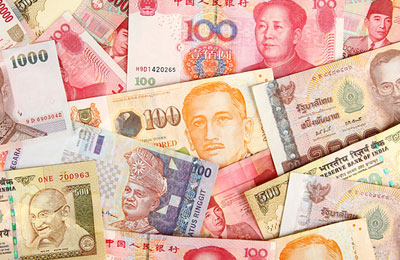
Moving to a multi-polar economy
, October 27, 2012
Alessandro Magnoli Bocchi
The international monetary system needs serious re-thinking. On paper, it has to guarantee – with its institutions, policies and conventions – the orderly functioning of transnational financial flows and exchange rate regimes.
Over the past few years, however, most currencies’ exchange rates fluctuated at an unprecedented pace, hampering commerce and capital transfers.
At the macro level, to ensure capital flows, trade relations and global prosperity, money needs to flow smoothly across countries. A few internationally-trusted currencies need to facilitate price setting, goods and services payments, holdings by governments and institutions of foreign exchange reserves, denomination of balance sheets for both public and private actors, and the accumulation of savings and (central) bank reserves.
Since 2008, however, periodic uncertainty about the global economy resulted in currency volatility. Search for safety privileged the US dollar, as policy intervention kept the Japanese yen and Swiss franc from overvaluation. In the Eurozone, capital flight created a quasi-currency market.
At the micro level, firms need to count on stable cost structures, gradual exchange rate adjustments, predictable business outcomes and orderly rebalancing of external accounts. Instead firms – particularly small and medium enterprises exposed to currency movements by a disaggregated supply chain – suffered exchange rate volatility and its effects on costs and prices.
Decade-long global imbalances caused, and were reinforced by, a series of financial crises. Uncertainty became the base case, currency forecasting became impossible and medium-to-long-term planning became more challenging.
The global monetary system is going through a tectonic shift. Currently, it heavily depends on the dollar and Euro which together account for about two-thirds of global foreign-exchange trading; nearly 90 per cent of the foreign exchange reserves held by central banks and governments; almost 80 per cent of the value of Special Drawing Rights, and more than three-quarters of all debt securities denominated in a foreign currency.
Still, as economic interdependence among emerging markets intensifies and currency correlations grow, firms are increasingly driven to switch trade contracts from dollar or Euro to local currencies. Furthermore, analysts and investors voice concerns about the future stability of the dollar and Euro and a weakening of their role as “store of value”. The US and Eurozone economies are fragile, face high debt and will undergo significant internal structural adjustments.
The global financial system is asking for more than one reserve currency, and a few monetary zones of regional significance. The world might drift towards a multiple reserve-currency system shared among the dollar, Euro and – sometime in the future – the Chinese renminbi. No one currency is likely to take over.
Over the next decade, the dollar will not lose its reserve-currency status and will remain the major investment currency. In the short term, there is a lack of viable alternatives. Still, its centrality will be gradually re-appraised.
A multi-polar currency system implies a slow, steady reduction in the long-term share of dollar assets in central bank vaults and private portfolios. The trend is there: the dollar’s share of global foreign-exchange reserves has already fallen from 80 per cent in the mid-1970s to around 65 per cent today.
The greenback will likely continue its downward trend against other major currencies. There are advantages: if other major currencies constitute greater portions of the world’s foreign exchange reserves, the US might find it increasingly easier to maintain its current account deficit at manageable levels.
The Euro will remain the primary alternative. True, Europe’s turmoil has drained confidence in the Euro’s future, and until a new governance and fiscal union are built the shift from dollar to Euro will pause. But if the Euro survives – as is likely – rebalancing in favour of the Euro in countries with large reserves now overweight in dollars will resume.
The renminbi will incrementally be accepted in trade settlements and outbound investments. In turn, China needs to co-operate in global currency management, promote regional integration, and deepen its domestic bond markets. As the renminbi becomes global, the country will be able to enjoy the financial advantages of printing a reserve currency, domestic macro-economic autonomy, balance of payments flexibility, low borrowing costs and a financial markets hedge.
Managing a multi-polar global economy will present serious challenges. A coordinated global adjustment is needed, with the G8 to allow a change in the geopolitical monetary hierarchy. A reformed IMF should play a key role in helping distribute benefits, costs and responsibilities. National and regional politics can lead to sub-optimal global outcomes. Until this process is complete, expect uncertainty and volatility to stay.







